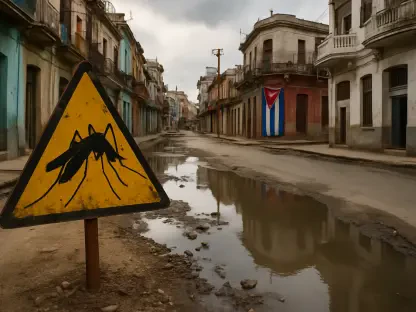As the federal government grapples with a recent shutdown, Coloradans are bracing for a potential surge in health insurance costs that could reshape affordability across the state, threatening the financial stability of many families. At the center of this crisis are the Enhanced Premium Tax Credits, essential subsidies under the Affordable Care Act (ACA) that have made marketplace insurance accessible for hundreds of thousands of residents. With these subsidies set to expire by the end of the current year, and Congressional inaction fueled by partisan disagreements, the risk of substantial premium increases looms large. State leaders and health care advocates are sounding the alarm, emphasizing the urgent need for federal intervention before critical insurance deadlines pass. This unfolding situation not only jeopardizes the well-being of many households but also highlights the deep intersection of national politics and local health care access, raising pressing questions about the future of affordable coverage in Colorado.
Political Gridlock and the Shutdown’s Impact
The federal government shutdown, sparked by a bitter partisan standoff in Congress, has cast a shadow over health care affordability in Colorado. Democrats are steadfast in their demand to include an extension of ACA subsidies in any funding legislation, arguing that these measures are vital for protecting vulnerable populations. In contrast, Republicans, who maintain slim majorities in both the House and Senate, are pushing for a “clean” funding bill devoid of such provisions, preferring to address subsidies in separate discussions. This impasse has stalled critical negotiations, leaving approximately 300,000 Coloradans who depend on these subsidies through Connect for Health Colorado in a state of uncertainty. The shutdown’s ripple effects are already being felt, as the lack of resolution threatens to derail efforts to maintain affordable insurance premiums for the upcoming enrollment period, intensifying the stakes for federal lawmakers to find common ground swiftly.
Beyond the immediate political deadlock, the broader implications of the shutdown reveal a systemic challenge in prioritizing health care policy amid fiscal debates. The inability to pass a funding bill not only halts government operations but also delays critical decisions that directly impact state-level insurance markets. For Colorado, this means that the lifeline provided by the Enhanced Premium Tax Credits hangs in the balance, with no clear timeline for resolution. Health care advocates have pointed out that the longer this stalemate persists, the more likely insurers will proceed with rate hikes, as they lack assurance of continued federal support. The urgency for Congress to act is compounded by the reality that each day of inaction brings Colorado closer to a scenario where affordable coverage becomes out of reach for many, underscoring the profound connection between national governance and local well-being.
Projected Premium Hikes and At-Risk Populations
If the Enhanced Premium Tax Credits are not extended, Colorado faces a daunting financial burden, with the state’s Division of Insurance forecasting a 28% average premium increase statewide in 2026. This figure climbs to a staggering 38% on the Western Slope, where costs are already high due to geographic and economic factors. Middle-income families, particularly those earning above 400% of the federal poverty line—equating to about $62,600 for individuals or $128,600 for a family of four—stand to lose subsidies entirely. For some households in harder-hit regions, this could translate to annual cost increases exceeding $25,000, a burden that may force tough choices about maintaining coverage. The projected hikes signal a reversal of recent gains in enrollment and affordability, raising alarms about the potential for a sharp rise in the uninsured rate across the state if federal action remains elusive.
The impact of these potential premium surges is not uniform, with certain communities facing disproportionate challenges. Rural and resort areas, already grappling with elevated health care expenses and limited provider options, are identified as especially vulnerable. An estimated 80,000 Coloradans could lose access to affordable insurance if subsidies lapse, with many in these regions lacking viable alternatives for coverage. This demographic reality amplifies the urgency for a resolution, as the loss of affordable plans could exacerbate existing disparities in health care access. State officials have warned that such outcomes could strain local health systems, as more individuals turn to emergency services or forgo care altogether. The looming threat of these increases highlights the critical need for targeted federal support to shield Colorado’s most at-risk populations from bearing the brunt of this crisis.
Critical Timing and Insurance Industry Pressures
Timing plays a pivotal role in the unfolding health insurance crisis, with deadlines for rate-setting creating a narrow window for federal action. Health care advocates, alongside state leaders like Governor Jared Polis, have stressed that Congressional intervention is essential before insurers finalize rates for 2026 in October, ahead of the November 1 open enrollment period. Missing this cutoff could mean that even a last-minute extension of subsidies might not prevent premium hikes, as insurers must base their plans on current policy assumptions. The fact that an earlier September target for action has already passed only heightens concerns, leaving little room for error. This time-sensitive dynamic underscores the disconnect between the slow pace of political negotiations and the fast-approaching realities of the insurance market, placing Colorado families in a precarious position.
The constraints of the insurance industry further complicate the situation, as rate adjustments require significant lead time and coordination. Insurers rely on federal guidance to project costs and set premiums, and the ongoing uncertainty surrounding subsidy extensions creates a ripple effect of instability. State insurance officials have noted that delayed federal decisions could lock in higher rates, even if subsidies are eventually renewed, due to the logistical challenges of revising finalized plans. This rigidity in the system means that Colorado residents may face inflated costs regardless of future Congressional outcomes, a scenario that has frustrated advocates pushing for swift resolution. The intersection of industry timelines and political inaction paints a stark picture of the challenges ahead, emphasizing the need for immediate clarity to mitigate the financial strain on households across the state.
Regional Variations and Broader Statewide Effects
The potential fallout from subsidy expiration will vary significantly across Colorado, with rural and resort communities poised to endure the harshest consequences. In these areas, where health care costs are already among the highest in the state, the loss of federal support could push insurance premiums to unsustainable levels. Families in such regions often face limited provider networks and higher baseline expenses, making the projected 38% premium spike on the Western Slope particularly devastating. For many, the decision to maintain coverage could come at the expense of other essential needs, highlighting a stark inequity in how this crisis unfolds. The vulnerability of these communities serves as a reminder of the broader stakes involved, as federal inaction risks deepening existing gaps in health care access and affordability.
Statewide, the implications of rising premiums extend beyond individual households to impact Colorado’s entire health care ecosystem. A significant drop in insurance enrollment, as predicted by experts, could lead to a higher uninsured population, placing additional pressure on local hospitals and clinics that must absorb the cost of uncompensated care. This cascading effect threatens to undermine years of progress in expanding coverage through Connect for Health Colorado, reversing gains made in reducing the state’s uninsured rate. Moreover, the economic ripple effects could dampen consumer spending and financial stability, as families redirect resources to cover health care costs. The urgency for a federal solution is thus not just about protecting individual budgets but also about safeguarding the broader public health infrastructure, a priority that resonates across all corners of the state.
Legislative Proposals and the Path to Compromise
Navigating the legislative landscape reveals a complex web of competing proposals to address the subsidy expiration, with little consensus in sight. Democrats, including Colorado Representative Joe Neguse, are championing a permanent extension of the Enhanced Premium Tax Credits, a stance supported by over 130 party members who see long-term stability as essential for health care affordability. On the other hand, some Republicans, such as Representative Jeff Hurd from Grand Junction, advocate for a more limited one-year extension, a proposal that has garnered only modest bipartisan interest. The stark differences in approach reflect deeper ideological divides over the role of federal support in health care, complicating efforts to forge a unified path forward. With the Senate’s 60-vote threshold for most legislation, any viable solution must transcend party lines, a daunting prospect amid the ongoing shutdown.
The challenge of achieving bipartisan cooperation is further magnified by the broader context of national debates over ACA funding and health care policy. Republicans’ historical reluctance to expand federal subsidies clashes with Democrats’ insistence on embedding these extensions in immediate funding bills, creating a standoff that shows no easy resolution. While some Republican lawmakers have expressed openness to discussing subsidies after a “clean” funding bill is passed, this sequential approach frustrates advocates who emphasize the time-sensitive nature of insurance rate deadlines. The intricate balance of power in Congress, coupled with the urgency of the issue for Colorado residents, places immense pressure on lawmakers to find common ground. As negotiations continue, the outcome will likely hinge on whether compromise can be reached before the window for meaningful impact on 2026 premiums closes entirely, a test of political will with far-reaching consequences for the state.









